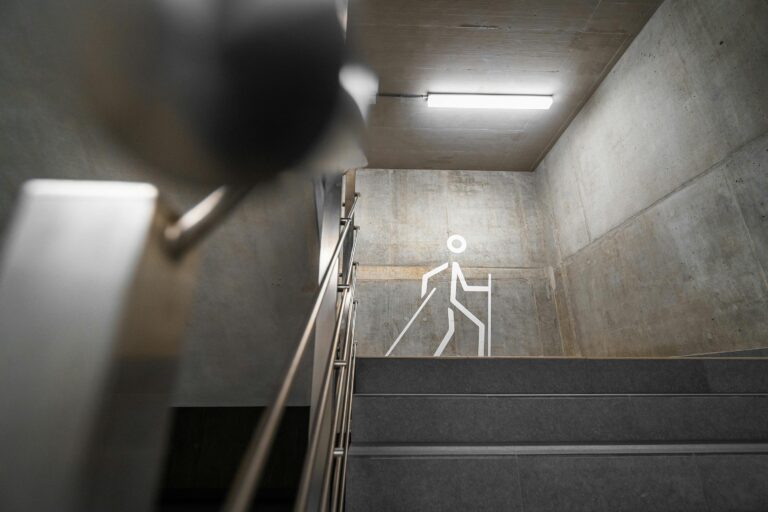In an era of growing uncertainty, people are looking for ways to ensure their safety and preparedness for unexpected events. Natural calamities, uncertain economies, and geopolitical unrest have driven growing interest in emergency bunkers as a dependable form of protection. These safe underground structures provide a sustainable environment for long-term survival and peace of mind by shielding occupants from external hazards. Technological and mechanical developments have turned contemporary bunkers into extremely useful environments that appeal more to a greater spectrum of people.
A Growing Concern for Global Instability
Many people have started investing in emergency bunkers as a preventive step due to growing concerns over world instability. Events, including political tensions, supply chain disruptions, and economic crises, have demonstrated how erratic modern society is. Many people are acting proactively to protect their families by allocating a specific area meant for self-sufficiency in uncertain circumstances. Modern bunkers offer better defense against a variety of possible hazards, including nuclear radiation, civil disturbance, and long-term power outages, than conventional basements or storm shelters. These buildings are made to resist severe conditions and yet provide a living environment with enough ventilation, water filtering, and food storage capacity. For individuals looking for long-term protection, bunker investments make sense, given the growing knowledge of possible hazards.
Advancements in Bunker Design and Technology
The development of bunker construction has been a major factor in their increasing appeal. Older designs were often simple and provided just modest protection with limited utility. Advanced engineering techniques used in today’s bunkers enable reinforced walls, air filtration systems, and energy-efficient solutions that make long-term living more practical. Customizable elements abound in modern bunkers: solar power integration, hydroponics food production, and even luxury lodging. Innovations in reinforced access points and access systems have made them more safe than they were years before. Using heavy-duty components like manways for tanks, some subterranean shelters guarantee that access points stay airtight and structurally sound under highly demanding circumstances. For those looking to maintain safety without sacrificing comfort or accessibility, these developments make bunkers a sensible investment.
Increased Interest in Self-Sufficiency
The growing popularity of self-sufficiency has helped with the increasing demand for emergency bunkers. People are realizing the advantages of having a self-sustaining surroundings that lessens dependence on external resources. Having an independent water supply, food storage, and alternate energy sources provides more peace of mind, whether one is getting ready for short-term events or long-term ones. Many contemporary bunkers feature food-growing capacity, renewable energy configurations, and rainwater collecting systems. These features enable residents to meet their survival needs independent of outside assistance. For those who give long-term preparedness a priority, bunkers provide an appealing alternative since they allow one to create and store basic resources inside a bunker, therefore eliminating vulnerabilities related to disruptions in public infrastructure.
A Shift in Public Perception
Over the years, opinions regarding emergency bunkers have evolved dramatically. Once associated primarily with military sites and extreme survivalists, they are today seen as a sensible investment for both households and companies. Rising media coverage and social debates have helped to normalize bunker ownership, effectively moving the emphasis from fear-based preparation to sensible security planning. As more people embrace the idea of preparedness, bunkers are being designed with greater accessibility and convenience in mind. Some businesses specialize in building reasonably priced, modular bunker systems to meet varying budgets and needs. This change has made it simpler for a larger audience to view bunkers as a workable emergency readiness solution. Many property owners are including underground shelters as a regular element in new construction projects as demand for secure spaces rises.
Growing Market and Investment Potential
The growing demand for dependable protection solutions shows in the burgeoning market for emergency bunkers. High-end, community-based bunker facilities are resulting from real estate developers and private investors seeing the financial possibilities of safe underground living quarters. These advances draw people who want both privacy and group readiness since they provide shared resources, strengthened security, and long-term sustainability. For those considering bunkers as a long-term investment, the resale value of homes featuring safe subterranean shelters has been consistent. The demand for pre-built bunkers or properties with bunker-ready infrastructure is anticipated to rise as awareness continues to rise. For those preparing for both present and future demands, emergency bunkers are a convincing choice because they combine security, sustainability, and market value.
Conclusion
Concerns about global instability, technology developments, growing demand for self-sufficiency, changing public opinion, and increasing investment possibilities are driving emergency bunkers’ increasing appeal. These subterranean shelters have developed beyond basic survival areas and provide contemporary conveniences supporting sustainability and long-term security. As more individuals and families understand the value of preparedness, the trend toward bunker ownership is predicted to keep expanding as a sensible and forward-thinking solution for uncertain times.

